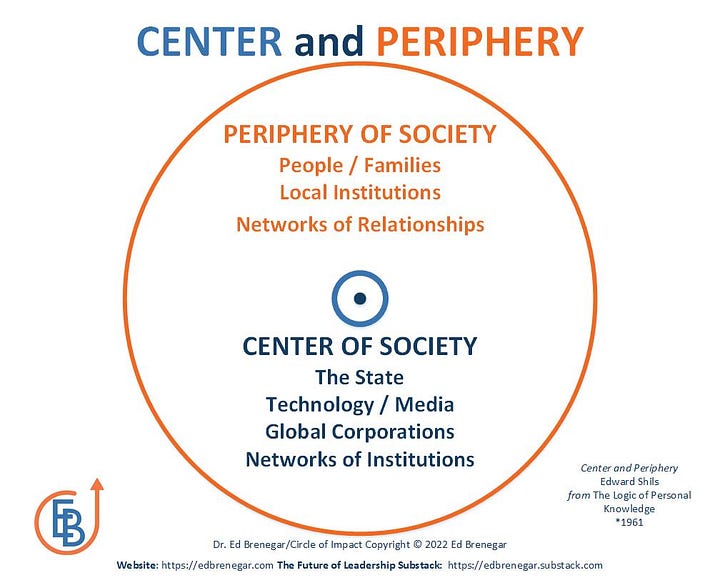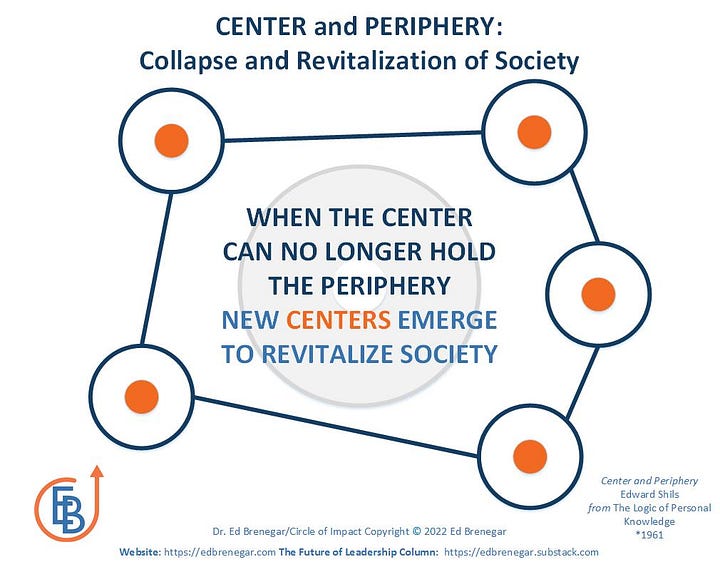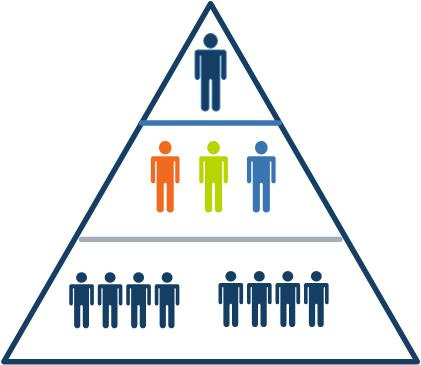The Synthetic Future of Organizations
It is remarkable to see how the Structural Hierarchies are failing and Networks of Relationships are an emerging answer to this transition.
A Network of Relationships of Impact
These four men are from Nairobi, Kenya. They each are doing different kinds of work. While at the same time supporting one another as they advance the quest to be persons of impact.
This is one example of a small network that is functioning outside of the traditional corporate structure of business. These guys represent the future. Not just of Africa but of the world.
In the Spirit of J.R.R. Tolkien’s Lord of the Rings, we called ourselves The Fellowship of Impact.
Creating Global Networks of Relationships
In my previous post, I wrote about reversing the way the globalist central powers use domination and hegemony to control people and organizations. The key for us who are not members of this elite circle of influence is to create global networks of relationships.
Two years ago, I established a program called the Global Impact Network to help people create their own networks. These are not my networks but the person who seeks to create one. I join these networks as a facilitator, guide, and mentor. The purpose of these networks is to gain access to information, resources, and partnerships with persons globally who can help one another through a cause or the resolution of a question or problem. These networks form around a specific need.
The more local these networks are the more likely that new organizations can form to serve a locale. Understanding why creating new organizations is important is the focus of this Substack.
Understanding Why Structural Hierarchies Are Failing
Modern centralized institutions, as I wrote about here, are organized as a Structural Hierarchy. They are designed to centralize planning and administration for the purpose of creating operational efficiencies.
You can deduce from that description that the different levels of an organization do not necessarily share a common set of values. However, for shared values to matter in an organizational structure, transformational relationships of respect, trust, and mutuality are needed. There may be people in your organziation with whom you do have shared values that guide your work. Unless those values are embedded in the culture of the company, then your relationships of share values exist in spite of instead of because of the structure of the organization.
As I have written about here, the culture of a company is identified as the active implementation of shared values within the structured hierarchy, mostly occurring between workers and middle management. I have described this as a persistent, residual culture of values that persists because it resides in the relationships of the people. At the executive level, what shared values exist are primarily focused on those who are the financial investors in the organization.
The Culture of Structured Hierarchy
The wealth of the modern world is a product of this Structural Hierarchy. As described by Jean Baudrillard, these organizations operated through the domination of a Master/Slave relationship embedded in the structure. The self-perception of the people, as a consequence, is shaped by these structures. We may think of ourselves as executives, managers, or workers. However, the actual relationship is much more of a transactional one carrying many unnamed expectations. The relationship between these three identities extends beyond the Structural Hierarchy to affect how we see ourselves functioning in society.
Structural hierarchies impact us by defining how we think, how we relate to people, and how we measure our lives based on where we fit into the structure.
Prominence within a Structural Hierarchy is determined by social privilege and power. It is a complex environment for people who enter into the competitive environment of hierarchy where performance dictates how one advance. The common belief is that opportunity awaits through hard work and high performance. Reality is often a very different picture, as a person’s skill at networking may be equally important.
These organizational hierarchies over the past century have transitioned from a world of mass consumer product development to a world focused on leveraging money from the sale of those products. Status is now less attached to the products you own and the named brands that you buy, and is related more to socio-political perception of the product. This dramatic transition means that we have moved from the world of things to the world of appearances. This is the world of the Spectacle of the Real.
Therefore, the economic impact of these structures is paired with a social one. The structure of dominance characterized by Jean Baudrillard as the Master/Slave relationship is transitioning from dominance to hegemony. This is the effect that organizational structure has on people. Baudrillard explains.
“… it could be said that hegemony brings domination to an end. We, emancipated workers internalize the Global Order and its operational setup of which we are the hostages far more than the slaves. Consensus, be it voluntary or involuntary, replaces traditional servitude, which still belongs to the symbolic register of domination.”
However you want to call it, the structure of organizations conditions us to be compliant members of the hegemonic system of control. Many writers have written about these systems of control, but awareness by the public in the aftermath of the COVID pandemic is only now emerging.
French philosopher Gilles Deleuze writes about Michel Foucault’s description of the stages of the organizational structure leading up to control. His perspective is that until the 18th century, the world was organized as a society of sovereignty, with kings and queens reigning. As the industrial age emerged, the world transitioned to a disciplinary society (domination), with the final transition being to a society of control (hegemony) that we see today. Deleuze explains.
The administrations in charge never cease announcing supposedly necessary reforms: to reform schools, to reform industries, hospitals, the armed forces, prisons. But everyone knows that these institutions are finished, whatever length of their expiration periods, it is only a matter of administering their last rites and of keeping people employed until the installation of the new forces knocking at the door. These are societies of control, which are in the process of replacing the disciplinary societies. “Control” is the name Burroughs proposes as a term for the new monster, one that Foucault recognizes as our immediate future. Paul Virilio is also continually analyzing the ultrarapid forms of free-floating control that replaced the old disciplines operating in the time frame of a closed system. There is no need here to invoke the extraordinary pharmaceutical productions, the molecular engineering, the genetic manipulations although these are slated to enter into the new process. There is no need to ask which is the toughest or most tolerable regime, for it’s within each of them that liberating and enslaving forces confront one another.
Gilles Deluxe - Postscript on the Societies of Control, 1992.
Reflecting upon this, you can see why the debate about Freedom of Speech (US Constitution Amendment #1) has become so contentious.
Author William Burroughs writes.
… words are still the principal instruments of control. Suggestions are words. Persuasions are words. Orders are words. No control machine so far devised can operate without words, and any control machine which attempts to do so relying entirely on external force or entirely on physical control of the mind will soon encounter the limits of control.
William S. Burroughs, The Limits of Control, Semiotext(e): Schizo-Culture, vol. III, no. 2, 1978.
If you work in the upper levels of an organization today, you can feel the ground shifting under your feet like a volcano about to erupt. You never quite know where you stand.
It is very similar to what George Orwell wrote about in 1984. Watch the opening twelve minutes of the film version of 1984. The manipulation of the people through the simulation of peace and crisis on the screen, followed by prison cells of the work cubicles ending with broadcast confession through an early version of social media and a dream.
(If you are triggered by images of angry mobs, choose not to watch, please.)
The series of images reminds me of the Blue Pill / Red Pill scene in The Matrx, when Morpheus introduces Neo to the different perspectives. The Blue Pill is a picture of hegemony. The Red Pill is a picture of domination. The implication in both films is that there is no choice. We are not truly free to decide the course of our lives. Of course, if you have been reading my material long enough, you know that I disagree. Here is part of the reason.
The Irony of Transition
The world of Structural Hierarchies is being disrupted by forces beyond their control. the attempt to centralize control assumes that they have the knowledge and capacity to make it work perfectly. They also assume that they can act in such a way that opposition does not have time to form. I believe there are just too many variables to ensure the level of success that they need to achieve total annihilation of human freedom.
This is why I speak a lot about the transition that we are in. It isn’t one transition but millions of tiny micro-transitions that give life dynamism. One facet of this transition is technological. Smartphone and digital communication programs like Zoom and Skype remove layers of intermediary structure that were once required for two people on different continents to work together.
For example, later this spring, a revised version of my Circle of Impact book, prepared for sale in Africa, with the title Circle of Impact Africa, will be released. It is the product of an almost weekly conversation with my Kenyan publisher, a West African French translator, and colleagues across the continent over the past three years. Without the ease of talking as if over the back fence, this project would never have happened.
Another disruption concerns the transition, as I described above, from a mass consumer brand culture to a culture of socio-political appearances. The result is a culture of narcissistic mimetic rivalry manifested through hegemonic power. We have very quickly shifted from a culture of reality - the old analog culture of physical objects - to a culture of simulation - a virtual culture of appearance. It has produced a tribal culture where the endpoint could ultimately be billions of self-identified tribes all at war with each other.
We are now witnessing the diminishment of the Structural Hierarchies of privilege and power expressed in the loss of trust and confidence in the institutions of society. This is the picture that I describe in my posts about Center and Periphery.


Once the Center fails to maintain the public’s trust in its leadership of society’s values and principles, the Periphery turns away to decentralize power into small societies or communities. The purpose of their hegemonic control is to create an authoritarian institutional structure that is so restrictive that we have no choice but to comply.
Restoring Self-Confidence and Hope for the Future
I have been watching this series of transitions since I was a child. The depth of understanding and the language that I use to describe it has changed a lot. I realized during my first semester at the university that I could not study just one subject. The changes that we were going through and continue to go through are not in one area.
One of the persistent observations concerns leadership and the Structural Hierarchies of organizations. From the very beginning of my interest in leadership, I realized that much of leadership theory was rationalizing the importance of top management. They were treated as the superheroes of management. Yet, I could not escape the realization that over the past fifty years, their track record is poor. Increasingly, they have isolated themselves into their protective enclaves.
Let me ask you a simple question.
Do you believe that you are responsible for the COVID virus pandemic or the war in Ukraine or the possibility of nuclear war, or a global economic depression?
Of course, you do not think so. The simple reason is that you are not in a position of authority to make those decisions, nor do you have the financial means, the political power, or the network connections to cause global crises to erupt. The world is too complex and centralized for any of us who are not a part of the elite to cause that to happen. As I keep saying,
“There are no accidents. There is intention in every crisis that happens. And nothing is hidden from the person who is willing to observe and reflect.”
This is the macro-picture of the world. Most of us do not live in that world. It is the world of hegemony and the Spectacle of the Real.
We can choose to live in a micro-picture of the world. We can reverse the polarity of our lives from a global focus to a local one. We can decide to build direct relationships, create a direct impact in our community, and focus on how to serve and befriend our neighbors.
Recently, I went to the memorial service for Buzz, a classmate from high school. I had not seen him since high school because I moved away from my hometown. He has spent most of his life right where he grew up. It was a simple service of people stepping to the front of the church to tell of how Buzz had made a difference in their lives. This was the service that went almost a hour and a half.
I left humbled by Buzz’s life. As I have constantly sought to expand my reach, Buzz stayed home and took care of his community. I realized the cost that I paid for a global life. It was price of not being rooted in a community where generation after generation will remember you because of what you did for them.
I sensed that day that Buzz had a network of relationships that would have been the envy of most of us. This is the potential that we each have. It is the potential that my friends in the Fellowship of Impact have. I am happy to be one of them.
As the Structural Hierarchies fail, our local network calls upon us to dig deeper into making our communities healthy places for people to live. You can deny the pressure to conform to the hegemonic culture of simulation. You can go help someone. Fix a meal for someone. Teach a kid without a father to ride a bike. There are many things to do that will become more important as this transition continues to unfold.
In the next post, I’m going to address the establishment and re-establishment of institutions, beginning at the local level.






Unfortunately, this doesn’t take into account much of neuroscience theory about humans. If you look at the natural order of things in terms of say, social structure in gorillas or in the wolf population and other mammals (lions, giraffes etc etc) generally, one sees that there is always a hierarchical structure. There is always a leader, generals, lieutenants and there’s always a group of females that oversee the children, etc. this is basic stuff. It’s how organizations work in order to keep everyone safe that’s how humans have organized as well and will continue to organize. We work against it now politically and Its causing much strife in the workplace but the order is still there. Women predominately run customer service and HR (who are still treated like the children of the organization-the problems ...generally but not always) and men are the CEOs and CFOs . There will always be a need for military because there are bad people who want status and to take over the supplies - money and food now whether or not organizations need to be structured this way to make money or to feed the population is a different story, but there will always be hierarchies and I think that’s one thing this article misses. Humans are basically motivated by status money food sex and addiction. There is no extrinsic motivator. As much as you want there to be. There isn’t. Sorry. Its why capitalism flourishes.
Very timely. Conventional organisations are fraying at the edges, and those edges are a very long trek from the centre. What you write here is clear. It’s what we do with it that matters now.